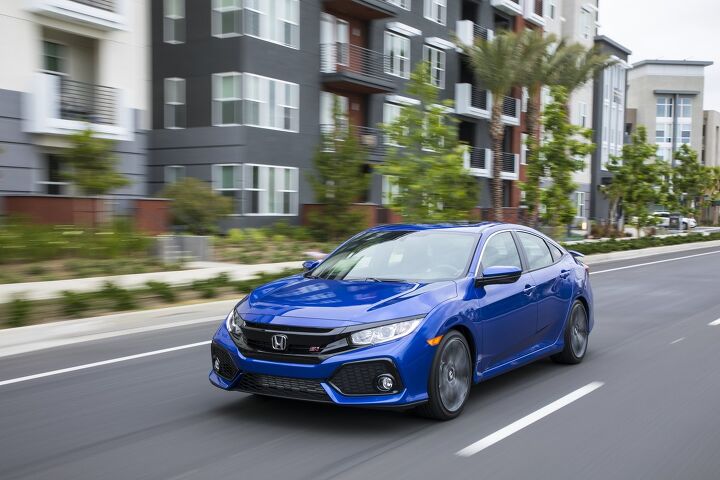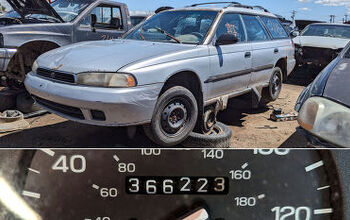Let's Applaud These Affordable Cars for Their Tesla Model 3-like Crash Safety

Sorry, was that too snarky? Our headline alludes to the National Highway Traffic Safety Administration’s recent awarding of five stars in all crash test categories to the Tesla Model 3 — a bit of news that’s made the rounds lately. It’s a worthy achievement, so hats off to Tesla for building a car that can take a beating.
However, if you’re still waiting patiently for Tesla to deliver your car, here’s a listing of vehicles costing less than the current “base” Model 3 (the $44,000 Long Range model) that are just as safe in a collision, and are available to buy at a dealership near you. Like, even today.
Tesla’s achievement isn’t an everyday occurrence, despite countless vehicles boasting a “5-star safety rating” from the NHTSA. That’s an overall score; an amalgam of front- and side-impact tests, plus a rollover tests. Available safety technology factors into the score, too. It’s common for vehicles to drive away with an overall five-star score after receiving four out of five stars in one or two of the categories. Actually, someone arriving via time machine from the 1980s would be surprised to see how close many plebian vehicles come to acing it.
My last car, for example — a 2011 Chevrolet Cruze that liked making fluids disappear — received five out of five stars in both the front- and side-impact tests. Available safety tech was sufficient, and only the rollover test suffered in any way, with NHTSA awarding four out of five stars for that hurdle. Regardless, the NHTSA stamped it with a highly marketable 5-Star Safety Rating. The Cruze’s second-gen successor also gained this rating.
But we’re not talking about “very good” here — we’re talking straight A students. So, here are vehicles with MSRPs below that of the Model 3 LR that leave nothing wanting in terms of safety, at least as far as the NHTSA is concerned.
- Ford Mustang (going back years, too)
- Kia Optima (see above)
- Genesis G80
- Acura TLX
- Honda Accord
- Honda Civic (Coupe excluded)
- Toyota Camry
- Subaru Impreza
- Subaru Legacy
- Nissan Maxima
This list could be incomplete, as several new models haven’t yet undergone testing. For example, the NHTSA still hasn’t offered a score to the 2019 Ram 1500 and Chevrolet Silverado/GMC Sierra full-size pickups, among others. The safety agency never even got around to testing the Kia Niro or Hyundai Ioniq, despite those vehicles not being new for the looming model year.
Regardless, suffice it to say there’s plenty of affordable options for buyers wanting a perfect safety score. If you’re more worried about tech annoyances and reliability issues, head over to J.D. Power.
By the way — have you noticed something unusual about this list of vehicles? That’s right, they’re all members of a vanishing race of traditional passenger cars.
[Image: Honda]

More by Steph Willems
Latest Car Reviews
Read moreLatest Product Reviews
Read moreRecent Comments
- Kwik_Shift_Pro4X I fell asleep looking at that image.
- Verbal Rented a Malibu a while back. It was fine, if a bit gutless.I get that Detroit wants to go all-in on high profit margin SUVs and blinged-out MAGA trucks. Everyone has known for decades that they can't compete on price in the affordable sedan space. So now all of Detroit's sedans are gone except for a couple of Cadillac models.But you'd think that just one of the domestic brands could produce a fun, competitive and affordable sedan. Just one? Please? Anyone? Bueller?
- 3-On-The-Tree I wouldn’t even use Ford as a hearse for fear of being late to my party.
- SCE to AUX Norway is in Europe, and Tesla is an American automaker - no problems there.I wouldn't use Ford as the bellwether.https://www.reuters.com/business/autos-transportation/tesla-extends-lead-norway-evs-take-record-82-market-share-2024-01-02/https://elbil.no/english/norwegian-ev-policy/
- Steve Biro If the U.S. government wants to talk about banning all connected cars - or at least the collection and sharing of information from said vehicles - I’m all ears. Otherwise, don’t waste my time.


































Comments
Join the conversation
ICE cars are crash tested with the fuel tank filled with a non-combustible liquid. Why are EVs crash tested with their batteries discharged/inerted?
Here's my main question with Tesla. I don't give a hot wet fart who does what to who, who tweets what, how much money they're making or losing on each car. The masses have spoken well so far for their product. My question is: Assuming the worst and Tesla folds in a year due to fiscal mismanagement or whatever the case may be, what happens to the cars? The car itself is so highly tied to the corporate overlords that you can't even get an independent to work on it. You can't get replacement parts without huge hoops to jump thru. You can salvage them (lookin at you Rich Rebuilds) but there goes your supercharging abilities. If the company folds, there goes ALL supercharging. So now you're left with home 120/240 connections. Whats the end result for the cars?